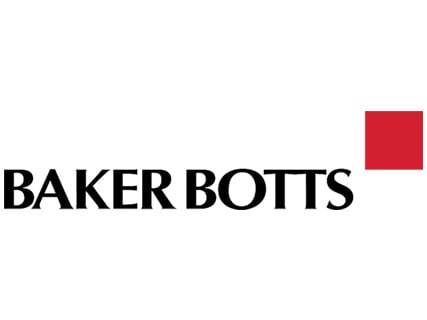A Guide to EU Climate Regulations Year 1: Insights for US Board Directors on the European Experience
Archive

NACD Northern California
Contact Us
Lisa Spivey,
Executive Director
Kate Azima,
Director of Partnerships & Marketing
programs@northerncalifornia.nacdonline.org
Find a Chapter
About The Event
The regulatory landscape in the United States continues to shift with regard to sustainability efforts, but many US companies will still be subject to global regulations, including those from Europe. In response to this, NACD Northern California brought together sustainability experts and board directors from Europe involved in implementing the European regulations this past year, who shared their valuable insights.
VIEW THE RECORDING
KEY TAKEAWAYS
Background to EU Climate Regulations
CSRD Implementation
-
The EU Corporate Sustainability Reporting Directive (CSRD), established in 2022, aims to enhance the transparency, consistency, comparability, and reliability of sustainability reporting across companies. The goals of the regulations were to achieve carbon neutrality by 2050 and to position Europe as a global leader in climate.
-
With its application starting in 2024, the regulation initially impacted large private and listed (public) companies. A timeline was provided for a broad spectrum of public and private companies and European businesses of non-European companies to begin reporting over the next few years.
-
The CSRD requires double materiality: Companies must assess and report on sustainability topics from both a financial materiality and impact materiality perspective.
Year 1 Experience
Positives:
-
Helped integrate sustainability into the company’s business strategy, ensuring it became a priority across the board and company-wide agenda.
-
Adapted governance structures, enhanced data quality, and aligned operations with sustainability goals.
-
Professionalized reporting processes, improving credibility through the role of audit committees, and helping to combat greenwashing.
-
Focused on value-chain reporting integration for a holistic approach to sustainability.
-
Established sustainability committees with regular reviews and integrated sustainability into corporate operations to prioritize long-term value creation and stakeholder interests.
Negatives:
-
The regulation does not explicitly link non-financial and financial reporting. Consequently, non-financial accounting and business model viability are still treated separately, meaning a full integration hasn’t yet been achieved.
-
While the regulation covers relevant topics, it often delves into excessive detail not applicable to every company. Moreover, it can lack adequate educational support for businesses on long-term sustainability implications.
-
The regulation does not sufficiently consider geographical differences in the implementation or the complexity of third-party engagement for global companies.
-
Some companies struggle to establish sustainability reporting processes due to the higher upfront costs, including additional third-party consultancy fees, which larger companies with existing frameworks can more easily absorb.
Proposed Adaptations to Current Regulation
-
The EU Taxonomy, a framework designed to guide investment decisions toward sustainable activities, is currently under review, and industries outside eligible categories are facing difficulties in aligning with the standards.
-
The Omnibus Regulation, which aims to simplify CSRD regulations and compliance, has created some legal uncertainty because it could exempt up to 80 percent of companies from reporting requirements.
-
The legislative process for the Omnibus Regulation is ongoing and expected to take time due to a lack of full alignment between EU institutions.
-
While some companies may benefit from the Omnibus Regulation’s relaxation of requirements, it could penalize early adopters who have invested significant resources in CSRD compliance.
-
Even with regulatory delays, the financial markets continue to push for sustainability, and many companies will voluntarily continue their reporting and advance their efforts.
-
Companies that have already invested significant resources into sustainability reporting will not backtrack easily. There is a growing demand from investors and stakeholders for enhanced sustainability practices, with many companies already reporting at a high level of detail (ranging from 40 to 200-page reports).
-
Companies can use the two-year pause on CSRD to move from the reporting burden to leveraging CSRD as a strategic tool, transforming their business models, and making sustainability integral to their long-term strategy.
Embedding Sustainability into Corporate Governance
Best Practices for Boards
-
Start with structured sustainability committees or sustainability champions on boards, gradually bring the topic to the whole board at a strategic level, through strategy sessions and educational expert sessions if needed.
-
Align all stakeholders around a redefined, sustainable purpose, vision, mission, and strategic objectives.
-
Hold regular reviews to integrate sustainability into corporate strategy and operations.
-
Link sustainability committees with audit and remuneration committees to ensure economic performance expectations are aligned with sustainability goals. The aim is to create an interwoven environment where non-financial and financial performance metrics work together.
Compensation and Sustainability
-
Some companies have been linking compensation to key environmental and social indicators, setting individual incentives tied to sustainability targets to reinforce the importance of sustainability across all levels of the organization.
The B-Corp Model
-
Some companies have adopted a B-Corp model, which aligns social, environmental, and economic sustainability with business purpose.
-
Such companies have modified their bylaws to reflect a for-purpose business model, integrating sustainability into daily operations, board decisions, and compensation policies.
Human Capital
-
It was suggested that talent is increasingly prioritizing companies that emphasize sustainability in their operations.
-
Comprehensive training across the organization is essential to ensure all employees understand the sustainability goals and are equipped to help achieve them.
Communicating Sustainability Initiatives
-
Companies should provide transparent and multi-format reporting to engage stakeholders, aligning their sustainability reporting with their business strategy and demonstrating progress on key objectives.
-
Clear, data-backed narratives are essential to mitigate greenwashing risks and ensure credibility in reporting.
-
Reports may be long and complex, so companies must strategically market their sustainability efforts to the right stakeholders using accessible formats and tailored messages.
Integration of Innovation and Sustainability
-
Balancing sustainability goals with technological innovation is key to ensuring that sustainability objectives do not compromise technological advancements. Understand the techno-economic dynamic.
-
Leverage AI and other emerging technologies to enhance sustainability efforts, ensuring that innovation is aligned with long-term environmental and social goals.
-
Understanding the cost structures and performance scalability of new technologies is critical for sustainable implementation. Teach eco-design to your team.
Practical Guidance for Boards
-
Directors should analyze sustainability statements from companies that were part of the first wave of CSRD reporting to conduct a thorough gap analysis. This will help identify areas for improvement and better align reporting with sustainability goals.
-
Integrate double materiality into risk management processes to ensure that sustainability reporting is used not just for compliance but as a tool for strategic decision-making.
-
Transition from a compliance-based approach to using CSRD as a strategic tool for business transformation, helping to align business models with sustainability goals.
-
Ensure that sustainability initiatives are scaled across the organization, ensuring that data, outcomes, and impact are aligned and measurable at all levels of the company.
-
Shift the focus from merely achieving carbon-free goals to addressing the role of fossil fuels in sustainability practices, with an emphasis on realistic and actionable targets.
-
Even when regulation diminishes, board members may see it as their responsibility to drive their organizations toward a sustainable future. This includes ensuring long-term value creation for both shareholders and the broader community.
-
The goal is to transform the business into one that is both economically and socially sustainable, ensuring that the company thrives.
SPEAKERS
MODERATOR
Thank you to our generous partner for making this event possible.
NACD Northern California
Contact Us
Lisa Spivey,
Executive Director
Kate Azima,
Director of Partnerships & Marketing
programs@northerncalifornia.nacdonline.org
Find a Chapter
By registering for an NACD or NACD Chapter Network event, you agree to the following Code of Conduct.
| NACD and the NACD Chapter Network organizations (NACD) are non-partisan, nonprofit organizations dedicated to providing directors with the opportunity to discuss timely governance oversight practices. The views of the speakers and audience are their own and do not necessarily reflect the views of NACD. |









